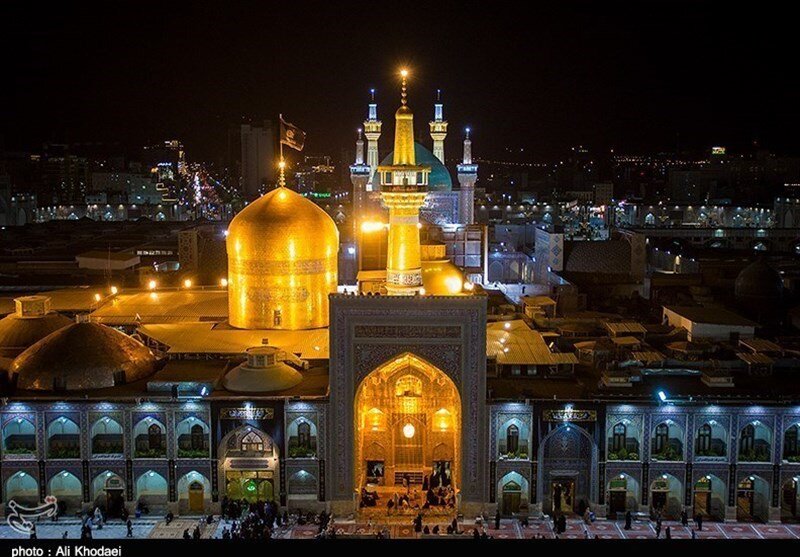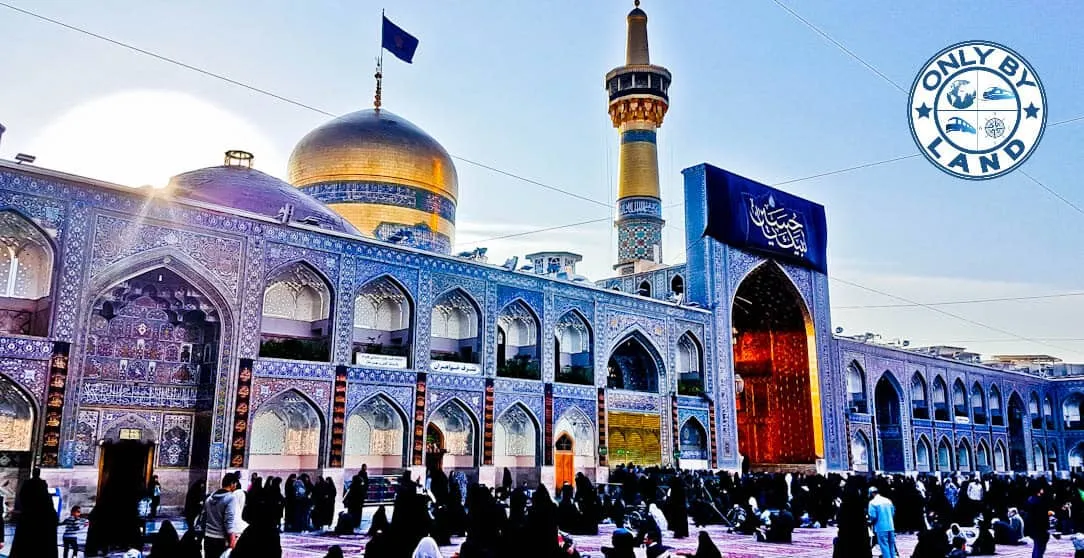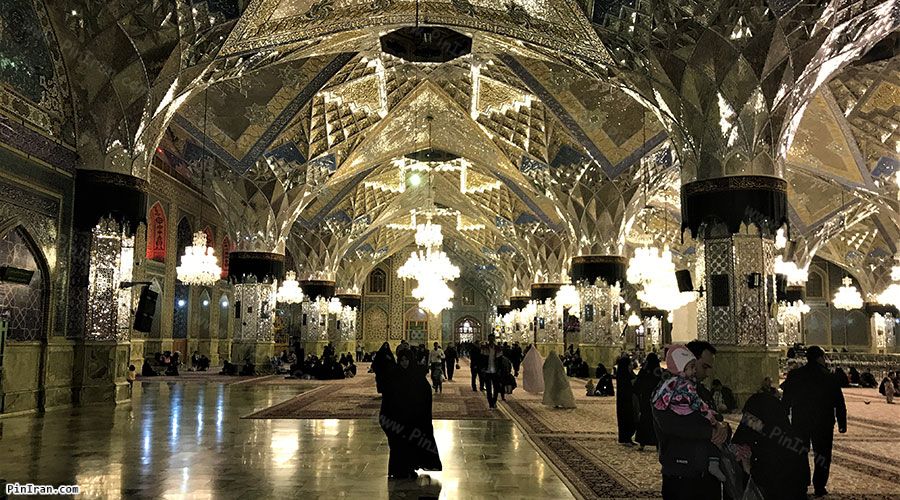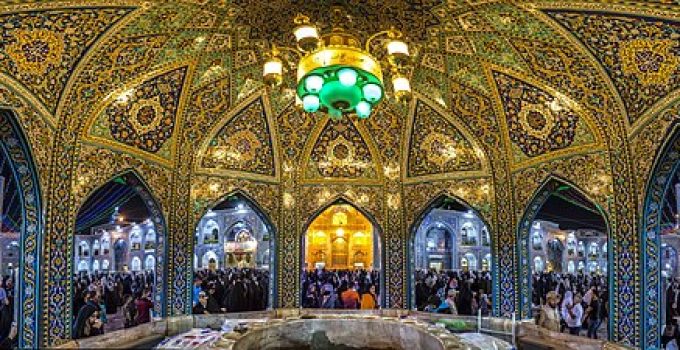Page Contents
ToggleThe Imam Reza Shrine, located in Mashhad, Iran, stands as one of the most revered and historically significant religious sites in the Islamic world. This majestic complex is not only a spiritual center for millions of Shia Muslims but also a cultural and architectural marvel that attracts visitors from around the globe. The shrine is dedicated to Imam Ali ibn Musa al-Ridha, known as Imam Reza, the eighth Imam in Shia Islam. His tomb within the shrine has been a focal point for devotion, pilgrimage, and religious scholarship for centuries.
Historical Background Imam Reza Shrine

Imam Reza was born in 766 AD in Medina, a city in present-day Saudi Arabia, and was a direct descendant of the Prophet Muhammad through his daughter Fatimah and her husband, Imam Ali. Imam Reza’s life was marked by his deep piety, vast knowledge, and commitment to guiding the Muslim community. His leadership was especially significant during a time of political upheaval in the Islamic world.
In 818 AD, Imam Reza Shrine was invited by the Abbasid Caliph Al-Ma’mun to Khorasan, a region in northeastern Iran. Al-Ma’mun’s intentions behind this invitation were complex; while he publicly honored Imam Reza, even naming him his successor, there are strong historical indications that this was a political move to placate the Shia population. Tragically, Imam Reza was poisoned and died in the same year, leading to widespread mourning among his followers. He was buried in the town of Sanabad, which later became known as Mashhad, meaning “the place of martyrdom.”
Architectural Significance
The Imam Reza Shrine has grown over the centuries from a modest tomb to a sprawling complex that covers more than 598,657 square meters, making it one of the largest mosques in the world. The complex includes the Goharshad Mosque, several vast courtyards, and numerous prayer halls. It also houses the museum of the shrine, a library, and a seminary. The architecture of the shrine is a blend of Islamic art and Persian aesthetics, featuring intricate tilework, grand minarets, and expansive domes.

One of the most striking features of the shrine is its golden dome, which gleams brightly and can be seen from miles away. The dome, originally constructed in the early Islamic period, has been repaired and refurbished multiple times, with the current gold plating completed in the 20th century. The minarets, similarly adorned with gold and intricate calligraphy, rise majestically around the dome, symbolizing the spiritual ascent of the believers.
The Imam Reza Shrine courtyards, known as Sahn, are vast open spaces where thousands of pilgrims gather daily. The largest of these, the Sahn-e Azadi, is particularly significant as it leads directly to the mausoleum of Imam Reza. The courtyards are beautifully decorated with marble, mosaic tiles, and inscriptions from the Quran, creating an atmosphere of serenity and devotion.
Religious and Cultural Importance
For Shia Muslims, the Imam Reza Shrine is not just a place of worship but a symbol of their faith and identity. The shrine is the most visited pilgrimage site in Iran and one of the most visited in the Islamic world, drawing millions of pilgrims annually, especially during the anniversaries of Imam Reza’s birth and martyrdom. Pilgrims come to seek spiritual solace, pray for their needs, and pay their respects to the revered Imam.

The Imam Reza Shrine also plays a crucial role in the cultural and intellectual life of Shia Islam. The complex includes a vast library that houses thousands of manuscripts and rare books, making it a center for Islamic scholarship. The shrine’s museum contains a rich collection of artifacts, including ancient Qurans, calligraphy, and historical documents that provide insight into the history of Islam and the region.
In addition to its religious functions, the Imam Reza Shrine is a site of social and charitable activities. It operates several schools, hospitals, and charitable organizations, serving the needs of the local community and pilgrims alike. The shrine’s management, known as Astan Quds Razavi, is one of the largest and most influential religious organizations in Iran, overseeing a vast network of endowments and businesses that support the shrine’s activities.
The Shrine in Contemporary Iran
In modern times, the Imam Reza Shrine continues to be a symbol of spiritual authority and national pride in Iran. It has withstood numerous challenges, including political upheavals and invasions, yet it remains a steadfast beacon of faith. The Iranian government places great importance on the shrine, both as a religious site mariatogel and as a symbol of cultural heritage. Significant resources are allocated for its maintenance and expansion, ensuring that the shrine remains a central part of Iran’s religious and cultural landscape.
The Imam Reza Shrine significance extends beyond the borders of Iran, serving as a spiritual destination for Shia Muslims worldwide. It fosters a sense of unity among the Shia community, as pilgrims from different countries come together in devotion at the shrine. This international aspect of the Imam Reza Shrine highlights its role as a bridge between cultures and a focal point of the global Shia identity.
Conclusion Imam Reza Shrine
The Imam Reza Shrine is more than just a religious site; it is a symbol of devotion, culture, and history. Its architectural grandeur and spiritual significance make it a unique place of worship that continues to inspire millions of people around the world. As it stands today, the shrine is a testament to the enduring legacy of Imam Reza and the deep reverence in which he is held by the Shia Muslim community. The shrine’s role in religious, cultural, and social life ensures that it will remain a vital part of the Islamic world for generations to come.


